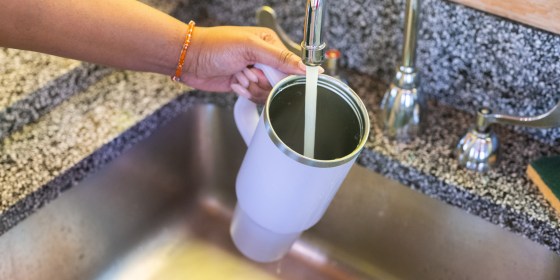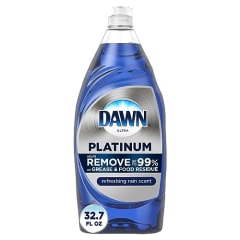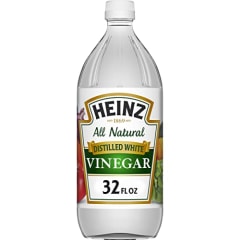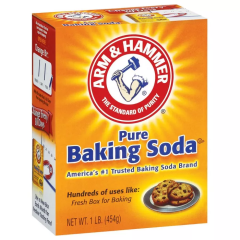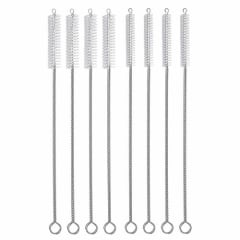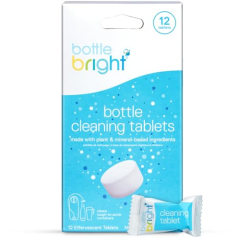Staying hydrated is essential for good health. Not only does it support digestion, it helps regulate body temperature, cushion joints and protect sensitive tissue, according to the Centers for Disease Control and Prevention. (The National Academy of Medicine recommends women and men, aged 19 to 30, drink between 9 and 13 cups of water a day, respectively.) That’s why having an insulated water bottle, such as ones from Stanley, Hydro Flask and Yeti, is helpful. What is equally as crucial as having a reliable drinking vessel, however, is making sure that you clean it just as often as you sip from it.
We consulted various experts, including professionals in infectious diseases and microbiology, to learn more about how often you should clean your reusable water bottles and the best products to use to do so.
SKIP AHEAD: How often should you clean a reusable water bottle? | What should you use to clean a reusable water bottle? | How to clean a reusable water bottle | How do you know if your water bottle is dirty? | Can you put a reusable water bottle in the dishwasher?
How often should you clean a reusable water bottle?
While you may think that your bottle looks and smells clean, you should empty and clean it daily, says Dr. Sharon Nachman, chief of the division of pediatric infectious diseases at Stony Brook University’s Renaissance School of Medicine. “[This] means taking it apart, dumping the water and cleaning all the pieces of it every day,” says Nachman. “Standing water is never good in a water bottle.” If water sits in a bottle for a long time at the right temperature, it can start to grow bacteria, according to Nachman.
Though it may seem excessive, cleaning your water bottle daily prevents the buildup of microbes, which are microscopic organisms that exist in various settings, including the human body. Some microbes are innocuous, while others cause illnesses, according to the National Library of Medicine (NLM). Bacteria, for example, are a common type of microbe, some of which can make people sick, according to the NLM.
What should you use to clean a reusable water bottle?
To properly clean a reusable water bottle at home, you should follow the methods you use to clean everyday items that you eat or drink from like plates and glass cups. A mix of lukewarm water and mild liquid dish soap are all you need, according to Nachman.
Mild dish soap is ideal since it has surfactants, an active ingredient that makes water molecules more fat soluble and decreases the surface tension of water, according to our experts. “[This makes it] easy to destroy microbes,” says Dr. Philip Tierno, clinical professor at the department of pathology at NYU Grossman School of Medicine. This way, you can “make it very hostile for an organism to survive.” Tierno also recommends using lukewarm water, since water that is too cold has a harder time dissolving soap, which can hinder its effectiveness.
In addition to soap and water, you can also use common ingredients you may already have in your pantry like distilled white vinegar or baking soda. Distilled vinegar, though not a powerful killer of germs, can remove fatty particles, according to Tierno, who also says that baking soda can be effective in releasing “gaseous material” to help extract particles.
As far as tools go, you may also need more than just your average sponge for a thorough cleaning. Certain parts of a reusable water bottle, such as the straw and lid, have small crevices and spaces that are hard to reach with just a sponge. Consider using tools like a small, bristled cleaning brush for straws and lids.
The best products to clean your water bottle
To find the best products to clean a reusable bottle (like a Stanley or Owala), we spoke with experts in the fields of microbiology and infectious diseases. Every item in this list is in line with their guidance and has at least a 4-star average rating and at least 500 reviews on Amazon or is a direct recommendation that I have used personally.
How to clean your reusable water bottle
You should clean your bottle every day or at least every other day, at the end of the day so that the next morning it’s ready to use when you wake up, according to our experts. In the sections below, we outline the different steps required for cleaning based on what materials you use.
How do you know if your water bottle is dirty?
Cleaning your water bottle daily is a necessity, according to experts we spoke with. Though it’s unlikely someone will get a severe infection simply by drinking from a water bottle that is not clean, it’s important to clean it regularly, especially when you consider your daily diet.
When you eat meals throughout the day without brushing and flossing, you’re left with small particles of food sitting in your mouth. The bacteria that develops in your mouth as a result, is known as flora. You can then backwash these particles into the bottle and develop into substrate, where microbes will begin to produce, according to Tierno.
In fact, this is what causes bottles to smell bad and water to develop a bitter taste, he says. When you eat while drinking from your water bottle, the bacteria in the bottle digests the food transmitted from your saliva. The smell that results is a telltale sign you need to clean your bottle.
Can you put a reusable water bottle in the dishwasher?
The answer depends on a couple of factors. Nachman does not recommend it since dishwashers require detergent pods, which are much more powerful than standard liquid dish soap and could risk damaging your bottles. Additionally, Tierno discourages dishwashing as it may not be as thorough as cleaning a water bottle by hand. Dishwashers may have difficulty properly spraying and cleaning the entirety of the bottle and pieces.
That said, there may be some benefits to using the dishwasher to clean your water bottle. Some dishwashers have “germicidal” cycles, which are sometimes called the sanitize cycle. These use high heat to kill germs and can be effective with water bottles, according to Tierno.
Meet our experts
At NBC Select, we work with experts who have specialized knowledge and authority based on relevant training and/or experience. We also ensure all expert advice and recommendations are made independently and without undisclosed financial conflicts of interest.
- Dr. Sharon Nachman is chief of the division of pediatric infectious diseases at Stony Brook Children’s Hospital. Nachman’s expertise includes infectious diseases, including epidemiology, immunizations, coronavirus and influenza.
- Dr. Philip Tierno is the director of microbiology and immunology and a professor of microbiology & pathology at NYU Langone Medical Center. Tierno is the author of several books on microbiology, including “The Secret Life of Germs” and “First, Wear a Face Mask.”
Why trust NBC Select?
I'm a commerce editor who covers various topics including home, kitchen, food and lifestyle. For this article, I spoke with experts in the fields of microbiology, infectious diseases and pathology.
Catch up on NBC Select’s in-depth coverage of personal finance, tech and tools, wellness and more, and follow us on Facebook, Instagram, Twitter and TikTok to stay up to date.

